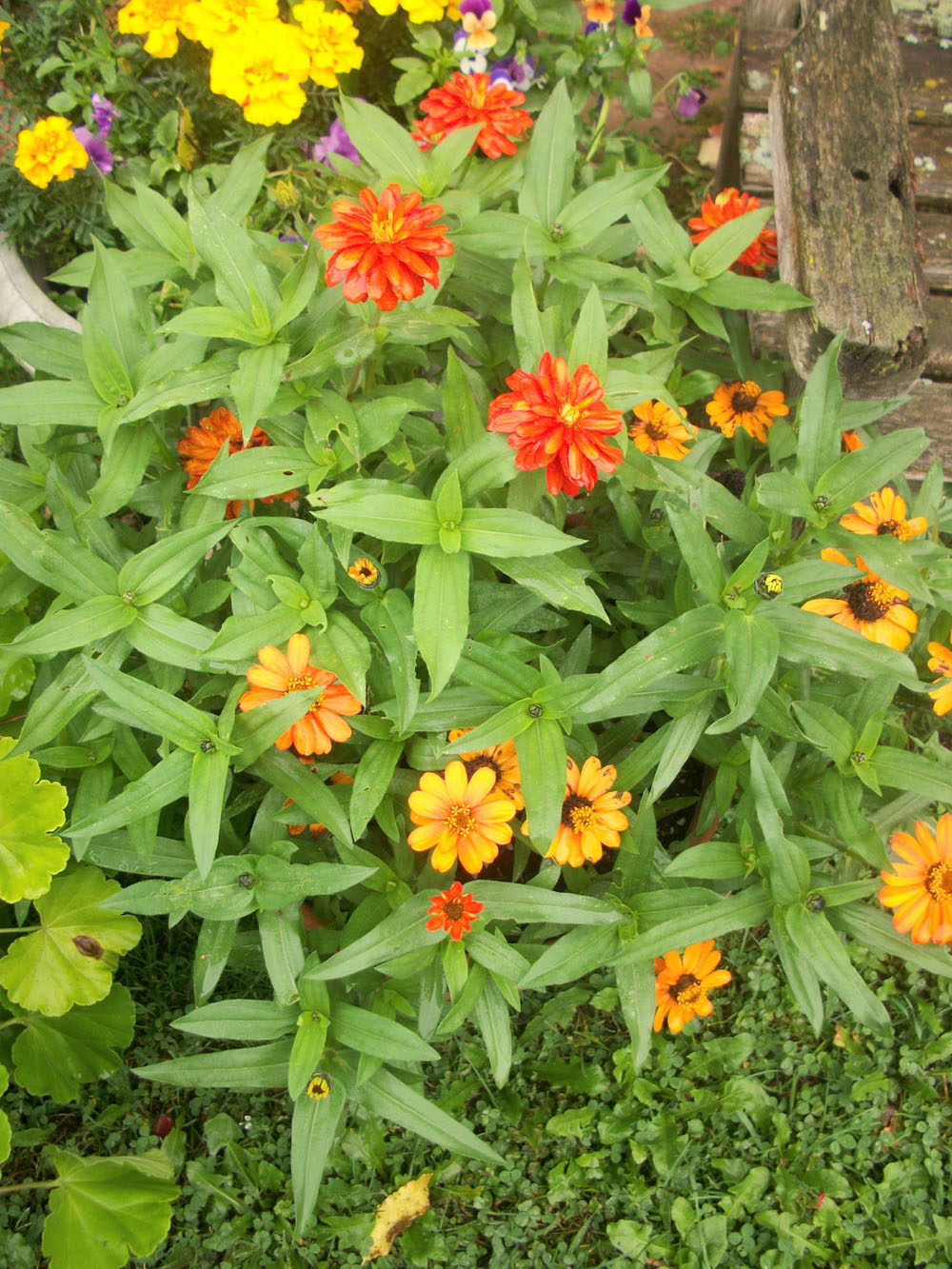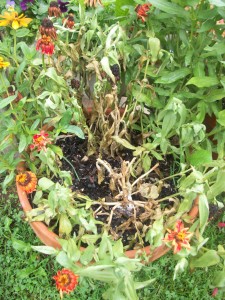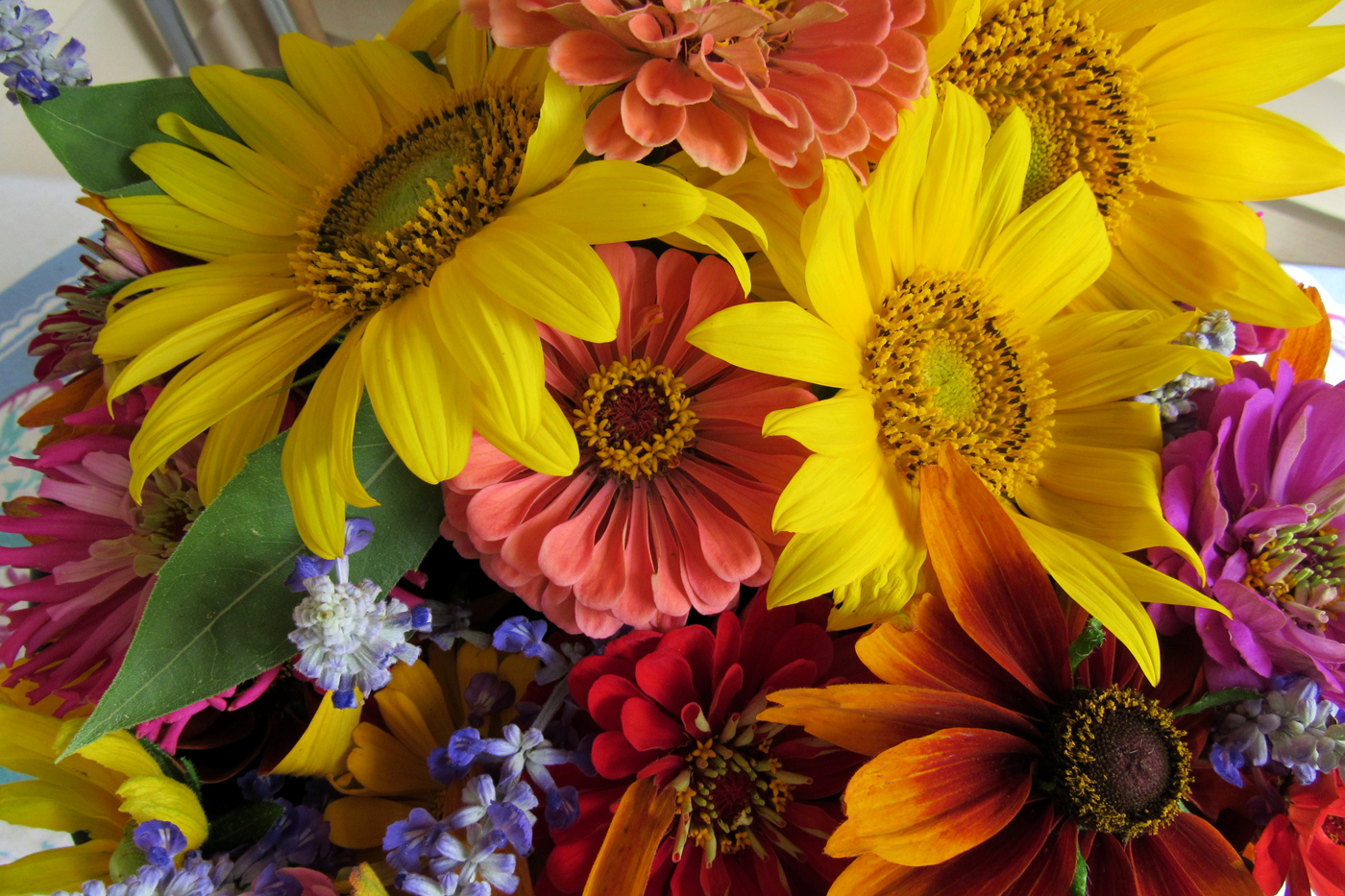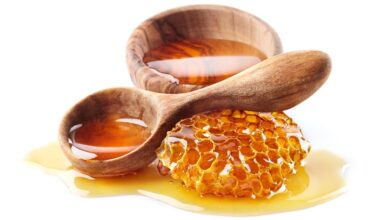Get Out & Grow

Trouble in the garden – mold takes its toll
I have been very pleased with the Profusion and Zahara bedding zinnias I grew from seed this year. They have been stunning in pots and flower beds during the late summer, so you can imagine my dismay when several plants in one container suddenly shriveled-up and died.
I thought perhaps the pot had gotten too dry, but closer inspection revealed a white moldy-looking substance at the base of the plant and the stems had turned a sickly tan color.
After some research, I concluded the plants had died from a disease called white mold, which is caused by the fungus Sclerotinia Sclerotiorum. A surprising number of common garden plants – from vegetables to annual flowers to perennials – can be affected. In all, more than 370 plants are susceptible, including zinnias.
Other plants include basil, petunias, pumpkins, spinach, squash, tomatoes, sunflowers, field crops and even forsythia can fall prey to white mold. Perennials affected include peony and columbine and weeds like dandelion and crabgrass also make the list.

The infection begins early in the growing season in plants, but is not noticed as the white mold develops. Cool temperatures and wet soil help the fungus to release spores which can be transported by the wind for a mile or more. When spores land on plant material, especially plants that are wounded or aging (old petals or leaves), they will germinate and start an infection.
At first, the stems appear to have water-soaked spots which then turn tan and continue to grow. The plant will look perfectly healthy on top, but once the fungus rots through the stem – just like it did on my zinnias – leaves suddenly wilt and the plant dies.
If you have plants with the tan to off-white sections on the base of the stem and cottony-white fungal growth, it’s likely white mold. Older infections will have hard black sclerotia – which look like broken-off pencil tips – clinging to the outside of the infected stem or embedded in the dead stem.
The sclerotia can overwinter and start new infections next growing season, so it’s important to take the white mold seriously and remove infected plants carefully. Do not knock off the sclerotia. Place the infected plants in a trash bag, never throw them on a compost pile.
Experts say there are steps you can take to control white mold and they are similar to controlling other fungal diseases. Water early in the day and at the base of the plant. The fungus needs moisture on plant tissue to start the infection, so giving plants plenty of space and careful watering can help. Controlling weeds is important as many weeds can act as hosts for the white mold fungus when ornamental hosts are not present. Mulches and micropore weed barriers can help prevent dispersal of spores. You can check into fungicides. Some are available for various plants and situations, but remember, they are preventative and will not get rid of an existing infection.
Battling fungal diseases is getting to be a major chore in my garden. I need to do a better job of giving plants lots of room for air circulation and using fungicides early in the season to prevent problems. The wet and cool conditions of this growing season certainly have not been helpful where fungal disease is concerned. I hope to do better with mulches and weed barrier fabrics to help protect plants. It looks like most of the annual vegetables and flowers (as well as perennials) I grow are susceptible to white mold, so I’m going to have to be especially vigilant in the future. It’s also unsettling that weeds can host the fungus and be affected as I live in the country and there are weeds everywhere around my property. Field crops can also spread the disease, and there are plenty of those around me as well. This year’s infection has appeared so far to be minimal, but that could change in the future.
If you think you spot white mold in your garden, remember to act quickly and carefully to keep it in control and save your remaining plants.
K. Gabalski photos




